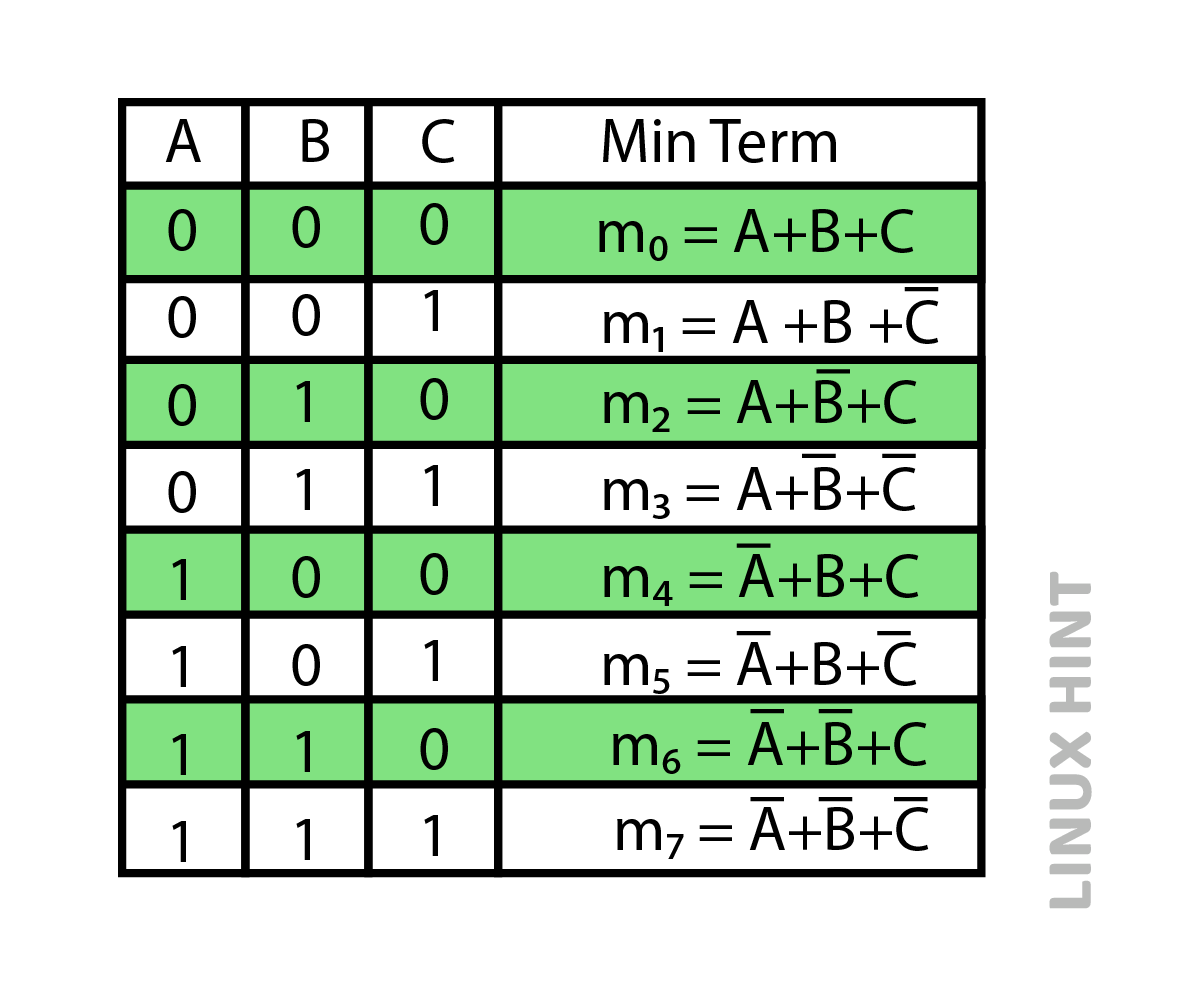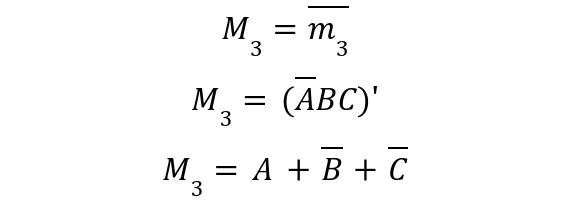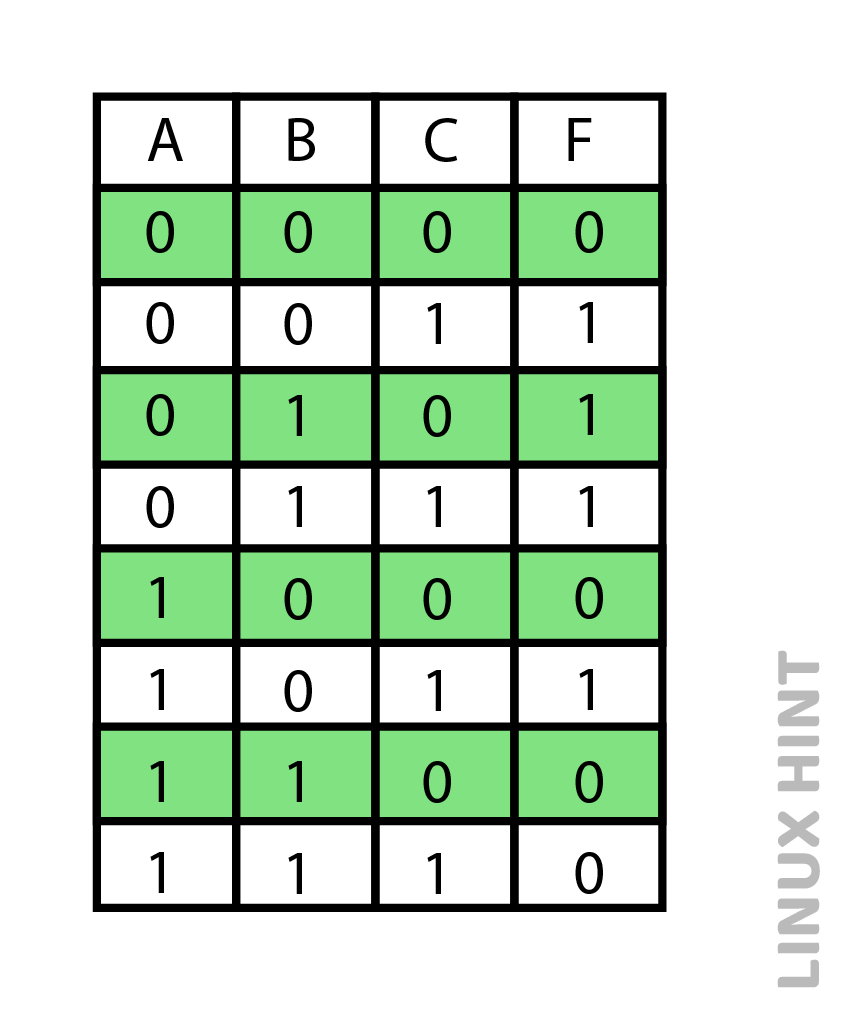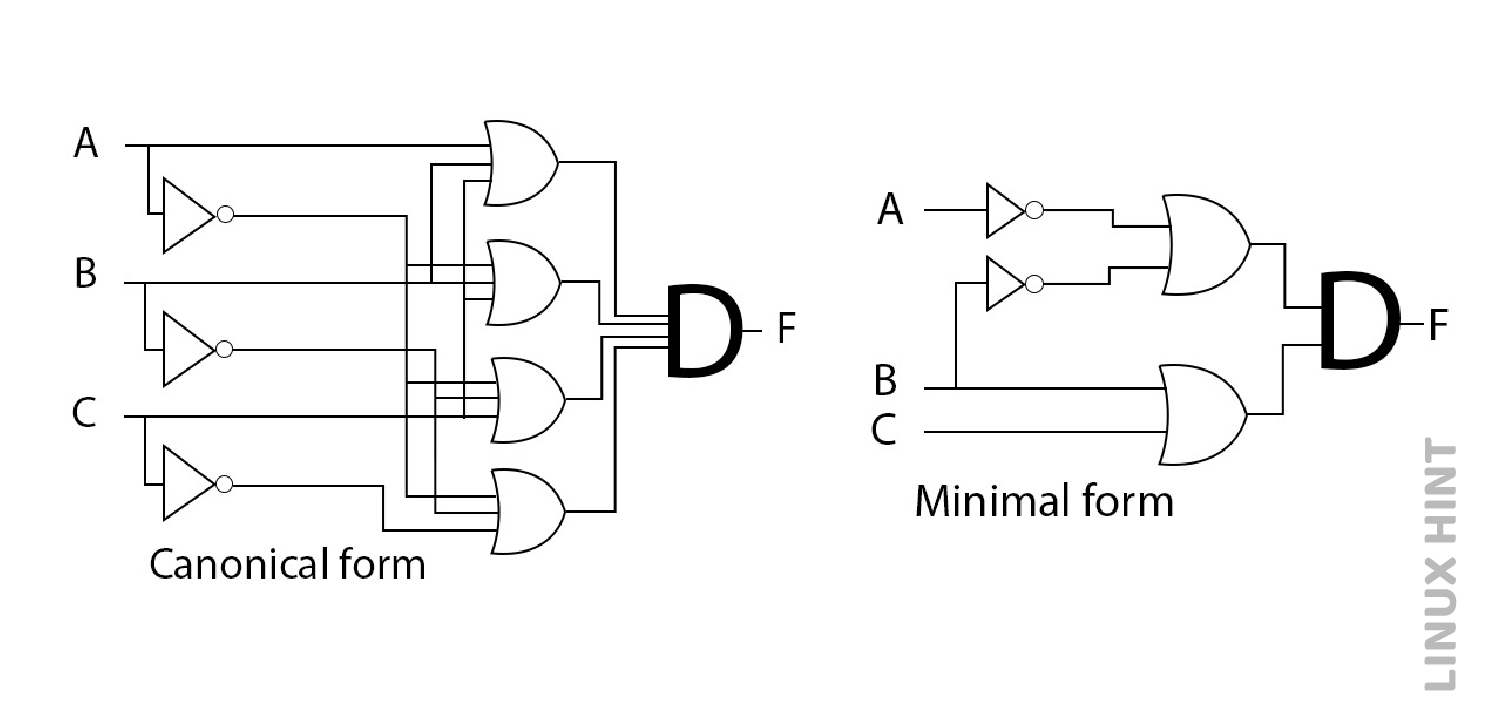Product of Sum (POS)
A Boolean expression form where products on the several input sum terms are obtained is called the product of sum (POS) form. These expressions may be considered as logical Boolean ANDs and ORs operations instead of simply the mathematical products and sums in the case of logic gates.
Maxterm is a term or expression that is true for the greatest possible number of input combinations or that is untrue for only one input combination. Since the OR gate also returns false for a single input configuration. Therefore, Maxterm is the OR of complement or non-complement inputs. Below is a list of the maximum terms for three input variables.
It will contain 8 maxterms since there are 8 possible combinations for 3 inputs. Capital ‘M’ and a decimal combination number are used to signify maxterms. in the subscript as seen in the above table.
As maxterm is the complement of min-terms. We can express them as follows:
Different Forms of Products of Sums
The Product of Sums can have the following types:
Canonical POS Form
Maxterms are AND together in this form, for which results of a false output are obtained. The truth table for three input variables-based functions can be used for evaluating max terms. The example given below shows how the canonical POS expression is represented by Maxterms.
The maximum terms of those combinations are AND together, which return ‘0’ at output. These cases are Mo, M4, M6, and M7 from the above truth table. Therefore:
Expanding the product:
Substituting Max terms:
All inputs, either complemented or uncomplemented, are included in each Sum term of the canonical form.
Non-Canonical Form
Non-canonical or non-standard form refers to the POS expressions which are not in their standard forms. Taking the above function:
The above expression can be simplified to reduce two of its max terms:
Therefore, the final function with reduced max terms is given by:
Although it is not in canonical form, the expression that was obtained is still in the Product of Sum form.
Minimal POS Form
A non-canonical POS expression is expressed in minimal form when it is in the most condensed and optimized form. Using Boolean algebraic theorems, one can get the minimal product of the Sum form. It is also possible to get minimal POS form using the Karnaugh map, which is a simpler method than utilizing Boolean algebraic theorems.
The implementation of the minimal POS form requires fewer inputs and logic gates than that of the canonical form, making it more efficient, quick, and affordable. Use the truth table of the above function as an example:
K-map provides the final minimal expression as:
The smallest product of sum terms in the above expression shows minimal form. Although just two OR gates and one 2-input AND gate are required, the expression is still a Product of Sum. For the same function, the canonical form requires a single AND gate with four inputs and 4 OR gates, each with 3 inputs.
Product of Sum (POS) Schematic Design
The product of the sum expression can be represented through a particular OR-AND-based circuit diagram. In an OR-AND-based circuit, the inputs pass through an array of OR gates at the first level of the gate, and the output of the first-level OR gates passes through an AND gate at the second level.
As the canonical form has the maximum inputs and gates whereas the minimum form contains the least number of inputs and gates. Both forms have been indicated with below logic diagrams below:
POS Conversion from the Minimal Form to the Canonical Form
The canonical form of POS includes max terms, and that max term comprises every input, whether it is complemented or not complemented. As a result, we will multiply each sum term by the total of the missing inputs that are complemented and uncomplemented. Below is an example of POS conversion from minimal form. Minimal POS form is given by:
We shall add (CC’) to the (A+B) term as it lacks the C input. We shall add (AA’) as the (B+C) expression lacks the input A.
The current form of expression is now in its canonical form.
Canonical POS to SOP Conversion
Only if the Boolean expression is in canonical form, the POS form can be transformed into the SOP form. In other words, canonical POS and canonical SOP may be turned into one another. Below is a conversion example from POS to SOP.
Consider the above function in its canonical form:
It is also possible to write it as max terms:
The remaining input combinations are minimum terms of the function for which the output is true.
We will modify the symbol to summation ∑ and the above entries into min terms:
The summation sign will now be expanded to create the standard SOP expression:
The above expression shows that for the same set of inputs, min-terms are Max terms’ complements.
Conclusion
The product of sum expressions is one of the preferable ways for simplifying different Boolean expressions. They are represented by their max terms and have different inter-convertible forms to simplify and condense the complex Boolean expressions.


















